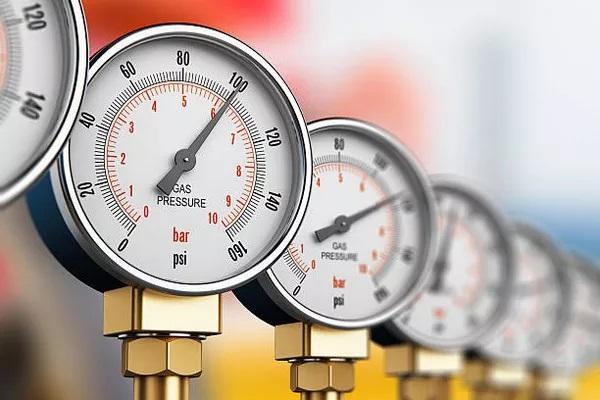A Pressure Gauge vs a Flow Meter: What is the Difference?

Pressure gauges and flow meters are foundational instruments in engineering, process control, and fluid mechanics. Though often used together in industrial systems, they serve fundamentally different purposes. This article aims to clarify the differences, delve into their operating principles, and explore their respective roles in instrumentation. Understanding their distinctions is essential for professionals involved in design, maintenance, or optimization of fluid systems.
What is a Pressure Gauge?
A pressure gauge measures the force exerted by a fluid (liquid or gas) per unit area within a closed system. The readings help monitor system integrity, detect leaks, and ensure safe operation of equipment. They are often used in mechanical systems like boilers, pipelines, compressors, and hydraulic machinery.
Types of Pressure Gauges
Each type operates using different mechanisms, such as elastic deformation, electrical signal transduction, or fluid columns.
What is a Flow Meter?
In contrast, a flow meter quantifies the volume or mass of fluid passing through a system per unit time. These measurements are vital in applications like water treatment, chemical processing, and gas distribution where control of flow rate directly affects efficiency and safety.
Types of Flow Meters
Flow meters come in various designs, each suited to specific types of fluids and system conditions, including viscosity, pressure, and temperature.
Key Differences Between Pressure Gauges and Flow Meters
-
Functionality: Pressure gauges measure pressure, while flow meters measure flow rate.
-
Measurement Units: Pressure is expressed in PSI, bar, or Pa; flow rate is measured in liters/min, m³/h, or kg/s.
-
Application: Pressure gauges monitor system stress and safety; flow meters control and optimize fluid transport.
-
Physical Principle: Gauges rely on force per area; flow meters often use velocity or mass displacement.
Working Principles Explained
Pressure gauges often rely on elastic deformation (e.g., bourdon tubes) or liquid columns (e.g., U-tube manometers). In digital gauges, strain gauges convert deformation into electrical signals. Conversely, flow meters may work based on mechanical rotation (e.g., turbine meters), fluid vibrations (e.g., Coriolis meters), or thermal dispersion (e.g., thermal mass flow meters).
Practical Applications
In water treatment plants, a pressure gauge monitors pipe integrity while a flow meter regulates chemical dosing. In the pharmaceutical industry, precise flow measurement is crucial for ingredient mixing, while pressure gauges ensure container integrity. HVAC systems utilize both to ensure optimal performance and safety.
Integration in Industrial Systems
Modern industrial systems often integrate both pressure and flow measurement instruments. Data from both are used in feedback control loops to maintain system performance. For instance, a decrease in flow rate might indicate filter clogging, which may also raise system pressure—both data points complement each other.
Maintenance and Calibration
Proper functioning of both instruments relies heavily on periodic calibration. Pressure gauges are calibrated against standard weights or pressure sources, while flow meters use reference flows or master meters. Environmental conditions, fluid type, and operational duration influence calibration intervals.
Cost Considerations
Pressure gauges are generally less expensive and simpler to install. Flow meters, depending on type and complexity, may require significant initial investment and precise alignment or setup, especially in high-accuracy applications like fuel monitoring using a fuel flow meter.
Advantages and Limitations
Pressure Gauges:
-
Simple and rugged design
-
Cost-effective
-
Real-time safety monitoring
-
Limited to pressure, no flow insights
Flow Meters:
-
Precise flow control and diagnostics
-
Essential for process optimization
-
Higher cost and complexity
-
May require fluid-specific calibration
Technological Advancements
Both instruments have evolved with digital technology. Modern flow meters integrate with IoT systems for remote diagnostics, while digital pressure gauges offer high accuracy and real-time data logging. Hybrid instruments are also emerging, offering pressure and flow measurements in a single device.
Conclusion
In summary, pressure gauges and flow meters are not interchangeable but complementary. A pressure gauge focuses on force within a system, while a flow meter tracks the movement of the fluid itself. Both are crucial in achieving safety, efficiency, and performance in industrial applications. Selection between them—or the decision to use both—depends on the specific operational requirements and system goals.
FAQs
1. Can a pressure gauge measure flow?
No. A pressure gauge only measures the static or dynamic pressure of a fluid and cannot directly determine flow rate. However, pressure differentials can be used in conjunction with calibrated devices (e.g., orifice plates) to infer flow.
2. Which is more important: pressure or flow?
Both are critical. Pressure ensures the system operates within safe limits, while flow maintains the operational effectiveness of processes. Neglecting either can lead to inefficiencies or hazards.
3. How often should these instruments be calibrated?
Typically every 6–12 months, but frequency may vary based on industry standards, usage intensity, and environmental factors.
4. Are there instruments that measure both pressure and flow?
Yes, some advanced systems integrate both sensors into a single module. However, their cost and application scope must justify the integration.
5. Which flow meter should I choose for measuring gas?
Depending on your gas type and flow characteristics, options include Micro Motion Flow Meters, vortex, thermal mass, and Coriolis flow meters.
- Art
- Causes
- Crafts
- Dance
- Drinks
- Film
- Fitness
- Food
- الألعاب
- Gardening
- Health
- الرئيسية
- Literature
- Music
- Networking
- أخرى
- Party
- Religion
- Shopping
- Sports
- Theater
- Wellness


